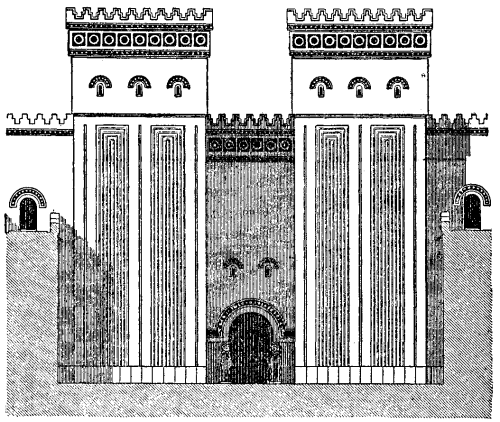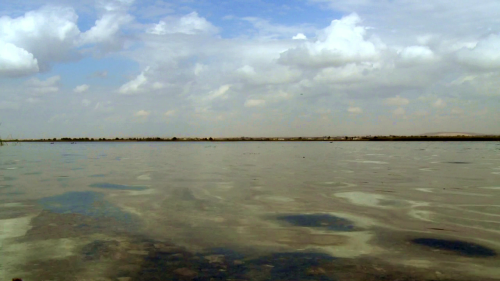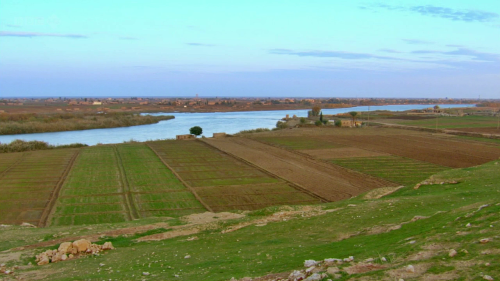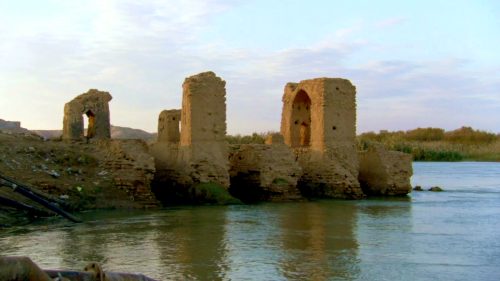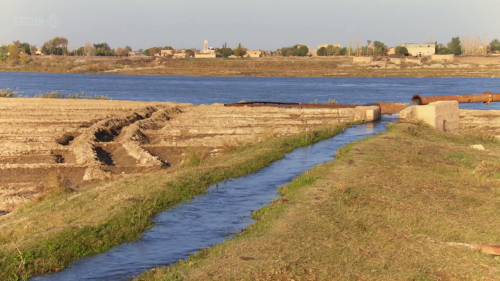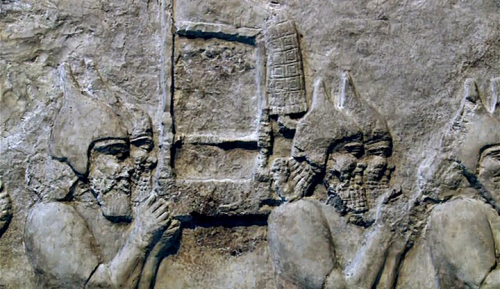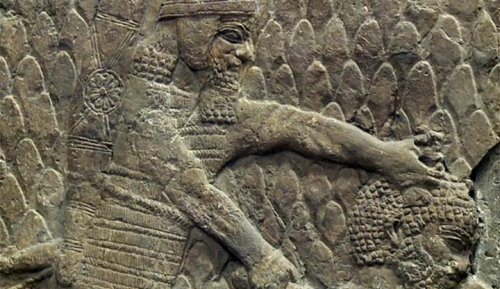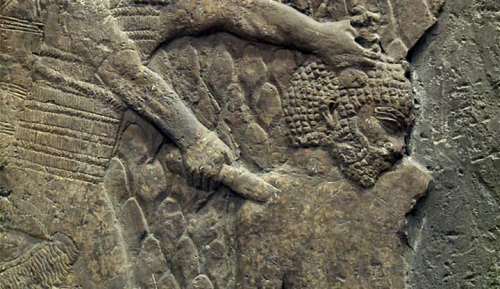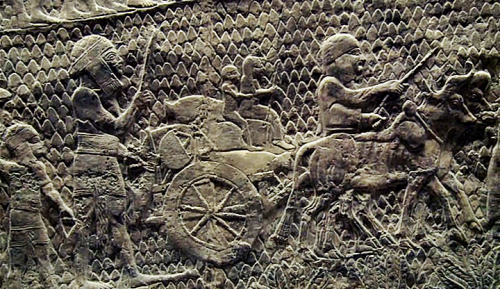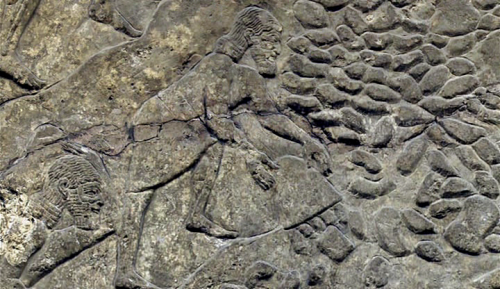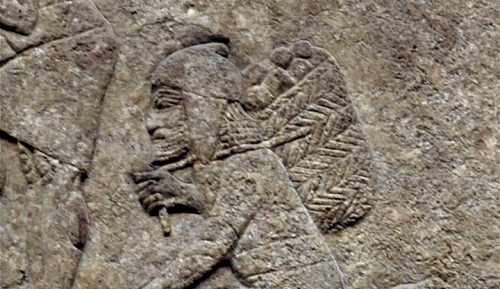#assyria
LODESTONE
Folk Names: Magnetite, Magnet, Way Stone, Magnetis (ancient Greek), Loadstone, Shadanu Sabitu (ancient Assyrian), Heraclean Stone, Piedra [man (contemporary Spanish)
Energy:Receptive
Planet:Venus
Element:Water
Associated Herbs: Sandalwood, Rose, Yarrow, Lavender
Associated Star: Polaris (the North Star)
Associated Stone:Coral
Associated Metals: Iron, Copper, Silver, Gold
Powers: Power, Healing, Attraction, Friendship, Love, Fidelity, Male Sexual Dysfunction, Will, Protection, Business, Money, Games of Chance
Magical/Ritual Lore:
Legend has it that the ancient Romans had a statue of Venus made of lodestone and an image of Mars fashioned of iron. When the two statues were placed near one another in the temple, Venus attracted Mars.
Tales (never substantiated) also sing the praises of a statue that was permanently suspended in the air through the use of lodestones.
The stone was associated with the hero Hercules in times past and so came to be a symbol of strength and invulnerability.
In contemporary folk magic, the lodestone is thought to be alive. It is placed in a small bowl of water on a Friday to allow it to “drink," then laid in full sunlight to dry. When dry, iron filings are sprinkled on it as "food.”
Though there are variations on this procedure-some keep the stone in a red bag and sprinkle water and iron filings on it once a week-it is a common belief.
Several hundred years ago it was believed that it was dangerous to carry a lodestone during a thunderstorm because it attracted lightning.
A knife rubbed with the stone was not only magnetized, but any wound inflicted with it, however small, was thought to be fatal.
The lodestone was once believed to be stripped of its magnetic as well as magical powers by the mere presence of a diamond or garlic. Giambattista della Porta, in his monumental 1558 work, Natural Magic, said he had disproved such beliefs.
Nevertheless, some still believed this was true. Fortunately, there was an easy way to restore the lodestone’s powers. It was anointed with linseed oil, placed in a goatskin bag and covered with dirt for three days.
Its use to strengthen virility and to cure male sexual dysfunction (impotency) spans the ages. In ancient Assyria it was used in a sexual rite of pure sympathetic magic. The man placed a lodestone in oil and rubbed the resulting “infusion” on his body and penis to ensure satisfactory sexual intercourse. The woman rubbed parzilli, or iron powder, on her body to enhance her attractiveness. Thus prepared, couples three thousand years ago magically (or psychologically) released their inhibitions and shared pleasure.
Comparatively recently, in 16th-century India a king ordered his cooking utensils to be fashioned of lodestone to ensure his continuing virility.
Prostitutes once used lodestones to attract customers, and thieves relied on them to hide from authority.
All this lore has sprung from the lodestone’s natural magnetic quality. It and artificially created magnets share the power of attracting iron. Five hundred years ago this was a magical, miraculous property, and many believed a spirit or demon lived within the lodestone and gave it power.
Though scientific investigation has explained magnetism to a certain extent, the lodestone continues to be used in spell and ritual.
This is especially true in Mexico, where it is sold in botanicas along with candles, incenses, religious medals, snakeskins, oils and various other occult goods. Similar stores are found in many parts of the United States where Spanish-speaking peoples live.
Mexican street vendors who deal in magical supplies also sell lodestones. A few years ago I bought one from a woman who sat on the curb in a Tijuana district unfrequented by turistas.
It is also well known in Hoodoo and other American folk magic systems. Lodestones are sometimes painted green (for use in money spells), red (love), and white (protection). Painting them is not, of course, magically important unless you deem it to be so.
Magical Uses:
The lodestone is a power stone used to strengthen spells. It is added to sachets or herbal amulets, placed on the altar, or worn to increase the magician’s ability to rouse and release energy.
In ceremonial magic of the Middle Ages the lodestone was engraved with the figure of an armored man. This stone was utilized during rituals to empower magic.
The larger the stone, the more inherent power within it. While this is true of all stones, it is especially important with the lodestone, for the greater its size, the stronger its magnetic force.
Lodestone’s basic use in magic is attraction. Because the stone is a natural magnet, it is manipulated in ritual to draw objects or energies to its user. Thus, it can be used in any type of spell.
A simple example of this: A lodestone set in a man’s belt buckle draws success in all undertakings. This is probably because of the stone’s attracting qualities as well as its placement near what some call the ‘third chakra’, located about two inches below the navel. This energy center is associated with personal power and the will. When it is stimulated by the presence of the lodestone, it expands the will and therefore ensures success.
This spell, by the way, is of Mexican origin.
The lodestone, owing to its magnetic powers, is used to draw out disease and pain from the body. True healers, who send energy into a sick person to speed the body’s natural healing powers (or, specifically, to correct imbalances or blockages in bodily energy flows), may use the lodestone as a focusing device for their energies.
The stone can be passed over or placed directly on the afflicted part of the body. This is particularly true of pain in the hands and feet.
It is also carried, often anointed first with a healing-type oil such as sandalwood. Any lodestones used in healing rituals to absorb disease should be cleansed after each use.
It is said to be effective in treating rheumatism and headaches, and in healing wounds. Placed in a black bag which was suspended on a black ribbon around the neck, it was a specific for gout a few centuries ago.
A small lodestone set in silver was thought to sharpen the sight. Set in gold, the lodestone strengthened the heart. A folk spell designed to heal the body of any illness is quite simple: Hold the lodestone in your hands, then shake it vigorously while visualizing your illness draining from you and going into the stone. Bury the stone in the earth for a week following the ritual.
Any lodestone used in healing rituals to absorb disease should be cleansed after each use or, if worn, every week or so.
The lodestone is also worn or carried to attract friendship. If you’ve just moved to a new city or have started a job among unknown people, wear or carry a lodestone to meet new friends.
The lodestone is also utilized to attract love. It is thought to be a magnet for hearts as well as for iron, especially when worn in a ring.
Place a pair of the stones within a circle of pink or red candles while visualizing yourself involved in a relationship. Feel the strong contact, the mingling of energies that comes with love. Visualize as well.
Two lodestones are also often carried in small red bags for this same purpose, sometimes mixed with love-attracting herbs such as rose, yarrow, and lavender (as well as copper, another love-inducer).
The lodestone is also worn to smooth over troubles in a relationship, especially arguing. Its basic function is to cool tempers to allow true communication.
A coral necklace with a lodestone suspended from it was once worn to facilitate easy childbirth.
In American folk magic, women wear lodestones to ensure that their wandering husbands will return home; thus, it stimulates fidelity.
Since this borders on manipulation, as does all fidelity magic, it deserves a few words here.
When you begin a loving/sexual relationship with another person, and especially when children result, you have relinquished some control over your life to your mate and family. This is part of the giving involved in strong emotional ties.
At best such fidelity magic should be used to gently remind your partner of his or her obligations. If a relationship has ended, that's that-all the spells and lodestones in the world won’t recapture the ecstasy, quiet peace and emotional fulfillment that love produces.
Psychic or magical enslavement isn’t love.
The lodestone’s ability to overcome impotency has been mentioned above, but such drastic or complex methods needn’t be used.
A man suffering from sexual dysfunction can hold the stone in his receptive hand, visualizing satisfactory, complete, joyous sexual relations.
Once this is done, he can carry the stone with him or place it beneath the mattress to release its powers. The stone and the visualization work toward rooting out the underlying cause of the sexual dysfunction.
The lodestone has also been utilized as a protective amulet, being worn, placed in the home, or carried. A large lodestone surrounded by flaming white candles emits guarding energies throughout the house. It absorbs negativity but does not return it. Because of this such stones should be cleansed in salt water every Full Moon.
Some carry two lodestones at all times-one to protect, the other to bring good luck. In ancient Spain carrying a lodestone was thought to guard against all dangers from steel, lead, fire and water.
For those lacking in will power (which is simply asserting yourself and acting in accordance with your goals), empower a lodestone through your visualization with this specific directive: “Strengthen my will.” Then carry the stone and utilize the energies it sends you. As I mentioned above, it can be worn two inches below the navel or placed there while you are prone and visualizing yourself as being confident and secure.
Because it is an attracting stone, the lodestone is used to draw money or business success. Place lodestone in a green bag with a silver coin, a bit of gold (ifyou have it) or money-attracting herbs such as patchouly, cloves or tonka. Business people may place an empowered lodestone in the cash register or cash box or burn green candles around a lodestone to bring in customers.
Finally, the lodestone is considered by some to be a potent gambling talisman. It is worn or carried for luck during betting.
[Source: Cunningham’s Encyclopedia of Crystal, Gem, & Metal Magic by Scott Cunningham]
Post link

Glazed Wall Panel from Fort Shalmaneser
Fort Shalmaneser, Nimrud (Iraq). Reign of Shalmaneser III, 858-824 BCE.
I’m working on this digital painting of Gilgamesh. Any comments on the character design are very, very appreciated!
Post link
Finally finished this whole set and took the opportunity to revamp the older ones.
It’s been fun.
Prints can be found here.
https://oscarcaselart.tumblr.com/
Post link
Assyrian dog figurines with names carved on them, 650 BC
“Expeller of evil” (mušēṣu lemnūti) with white pigment and red spots
“Catcher of the enemy” (kāšid ayyāb) with red pigment
“Don’t think, bite!” (ē tamtallik epuš pāka) with white pigment
“Biter of his foe!” (munaššiku gārîšu) with turquoise pigment
“Loud is his bark!” (dan rigiššu) with black pigment
Post link

Queen of Assyria, Semiramus, by Roger Payne
Detail of Shirin, Queen of the Sassanian Empire, bathing. The hooves of the horse of King Khosrow can be seen at the top right. From the Kashmir Manuscript, 1791.
Shirin was the wife of Khosrow II, the shahanshah, or King of Kings, of the Sassanian (Persian) Empire. Her exact cultural/ethnic origins are debated; some sources say she was Roman (at her time that was the Byzantine Empire who considered themselves Roman) and others say she was Aramean, a non-Persian from the areas of Assyria and Babylonia.
What is known is that she was a Christian and Khosrow was Zoroastrian and that such a relationship was considered forbidden. Through all the turmoil in their lives, Shirin and Khosrow remained together. During that time she was able to gain support for the Christian minority in the empire.
Her and Khosrow’s lives and romance are retold, with fictional elements, in the Persian epic poem Shahnameh, the romance Khosrow and Shirin by the famed poet Nizami Ganjavi, and even in One Thousand and One Nights.
~Hasmonean
Post link
Neo-Assyrian stamp seals depicting a dog (top) and the goddess Gula on her throne resting on a dog with an attendant. Circa 700-600 B.C. Now in the British Museum.
Gula was the Assyrian goddess of healing and the dog was her attribute. It was believed that if you neglected or harmed your dog then that would incur the goddess’ wrath.~Hasmonean
Post link


An individual named Assur-sumu-iddina responding to a certain Summu-Assur. It appears Assur-sumu-iddina did not respond to Summu-Assur’s initial letter. The reason–or possibly excuse–is that Sumu-usur was supposed to give Assur-sumu-iddina the letter. Instead, a nameless man, possibly the courier, didn’t give the letter either and ran away.
Either way, another example of people in ancient world not replying to each other. Source: Letters from Assyrian and Babylonian Scholars by Simo Parpola.
~Hasmonean
I HAVE AN STD, SEND HELP!!!
A letter written from the Neo-Assyrian (circa 911-612 B.C.) priest Nergal-šarrani to his king asking for medical aid for an STD he contracted by having lot’s of sex with women. Original language is Akkadian. From Nineveh in northern Iraq and now in the British Museum. Archival view.
What is interesting is the STD is being called “hand of Venus”, or in the original text “qatu Dilibat(ordil-bat).” In Mesopotamian medical texts the hand could signify a disease label or the ultimate disease cause agent. Transliterated cuneiform and translation of text (link).
Nonetheless, an odd thing to write to your king.
~Hasmonean
Post link
Foreign groom in a tributary procession. Neo-Assyrian, ca. 721–705 B.C. Medium: Gypsum alabaster. From the Metropolitan Museum.
Post link
Lamassu from the Citadel of Sargon II
Dur Sharrukin (modern Khorsabad), Iraq, ca. 720–705 bce
During the first half of the first millennium BCE, the fearsome Assyrians vanquished the various warfaring peoples that succeeded the Babylonians and Hittites, including the Elamites, whose capital of Susa they sacked in 641 BCE.
The royal citadel of Sargon II at Dur Sharrukin reveals in its ambitious layout the confidence of the Assyrian kings in their all-conquering might. Guarding the gate to Sargon’s palace were colossal limestone monsters, which the Assyrians probably called lamassu.These winged, manheaded bulls served to ward off the king’s enemies. The task of moving and installing these immense stone sculptures was so daunting that several reliefs in the palace of Sargon’s successor celebrate the feat, showing scores of men dragging lamassu figures with the aid of ropes and sledges. The Assyrian lamassu sculptures are partly in the round, but the sculptor nonetheless conceived them as high reliefs on adjacent sides of a corner. (x)
Post link
Library of Ashurbanipa, 1112BC-1074BC. Middle Assyrian [OS][750x1341]
Source:http://www.britishmuseum.org/collectionimages/AN00029/AN00029380_001_l.jpg
Post link
The Ziggurat of Dur-Kurigalzu, Iraq, 1915. Photo: “‘Aqar Qūf”, by Robert William Rogers - A History of Babylonia and Assyria. Licensed under Public Domain. Via Wikimedia Commons.
Post link

I know some of my followers like vampires… so I thought I’d show a little teaser of my contribution for the LGBTQ vamp zine Blood & Breath! Proceeds from the zine are going to the Move To Higher Ground project for the Quileute tribe. Preorders close Jan 5th and you can order a copyhere!
Ancient Worlds - BBC Two
Episode 1 “Come Together”
TheEuphrates is the longest river in southwest Asia and one of the most historically important rivers in the world. The Euphrates rises in Turkey and flows southeast across Syria and through Iraq. Along with the river Tigris, it provided much of the water that supported the development of ancient Mesopotamianculture.
The Tigris Euphrates valley was the birthplace of the ancient civilisations of Assyria, Babylonia,Sumer and the Akkadian Empire. The ancient Greeks called that region Mesopotamia “the land between two rivers” (Tigris/Euphrates). People had occupied that marginal land for 1.000 years before the first cities appeared. They arrived as pastoralists with their herds; they stayed on as farmers close to the river banks in scattered communities of 1.000 or 2.000 people at most. Around 3.100 BC Southern Mesopotamia experienced a growth in the number and size of settlements, suggesting strong population growth. People left the security of their family compounds and tribal villages and they came together with other strangers to create something far more complex: a city, a society, a civilisation. Many of these city-states were located along canals of the Euphrates and the Tigris. A similar development, although on a smaller scale than in Lower Mesopotamia, took place in Upper Mesopotamia in the second part of the 3rd millennium BC.
All the ancient civilisations of the world have flourished near the river beds The Tigris Euphrates river system is one of the four river civilisations where writing was invented, along with the Nile valleyinEgypt (Nile River), the Indus Valley civilisation in the Indian subcontinent (Indus River), and the Yellow RiverinChina.
Post link
Ancient Worlds - BBC Two
Episode 2 “The Age of Iron”
Detail-Assyrian stone wall panel from the Central Palace of Nimrud (Kalhu), Northern Mesopotamia(Iraq). It dates to 728 BC.
KingAshurnasirpal II (reigned 883 - 859 BC), moved the Assyrian court to Nimrud and the city became the administrative center of the empire and the king’s residence. Ashurnasirpal’s most impressive building was his new royal palace, the Northwest Palace. A citadel that housed the palace and several temples of the most important deities of Assyria were built. Nimrud was protected by a 7,5 km long fortification wall.
King Tiglath-Pileser III (ruled 744/5–727 BC) built a new royal palace, known today as the Central Palace. He had his royal annals engraved across the bas-reliefs depicting his military achievements on the sculptured slabs decorating his palace. Parts of those wall decorations are today housed in the British Museum.
British Museum, London
Post link
Ancient Worlds - BBC Two
Episode 2 “The Age of Iron”
TheLachish Relief, a series of stone panels which decorated the walls of the Assyrian king Sennacherib’s great palace at Nineveh. The reliefs narrate the story of the siege and capture of the city of Lachish,inJudah, in 701 BC.
The Lachish relief shows Sennacherib as an invincible king presiding over a perfect victory. Soldiers storm the town walls while a procession of prisoners are marched out of the town into exile, through the countryside, to be resettled elsewhere in the Assyrian Empire. Below them high officials and foreigners are being tortured and executed. The panel also depicts the looting of the city and the surviving men put to work in stone quarries (pictures n. 4, 5). Such scenes demonstrated the terrible consequences of rebelling against the Assyrian empire.
PART III
The British Museum, London, UK
Post link
Ancient Worlds - BBC Two
Episode 2 “The Age of Iron”
TheLachish Relief, a well-preserved series of stone panels which decorated the walls of the Assyrian king Sennacherib’s great palace at Nineveh. The reliefs narrate the story of the siege and capture of the ancient city of Lachish, inJudah, in 701 BC.
King Sennacherib reigned from 704 to 681 BC. He moved the empire’s capital to the ancient city of Nineveh and built the Great Palace of Nineveh, also known as the South-West Palace. Many rooms were decorated with alabaster wall reliefs.
The Lachish relief hold depictions of Assyrian siege ramps, battering rams, sappers, and other siege machines and army units, along with Lachish’s architecture and its final surrender. The reliefs also show scenes of extreme violence: the defenders of the city being thrown over the ramparts, impaled, having their throats cut and asking for mercy. Warfare is a recurring theme in Assyrian art and texts.
The single inscription on the reliefs reads:
“Sennacherib, the mighty king, king of the country of Assyria, sitting on the throne of judgment, before (or at the entrance of) the city of Lachish (Lakhisha). I give permission for its slaughter”
PART II
The British Museum, London, UK
Post link
Ancient Worlds - BBC Two
Episode 2 “The Age of Iron”
Lachishwas the second most important city in the southern kingdom of Judah,part of the Kingdom of Israel.
Occupation at the site of Lachish began during the Neolithic period and during the 10th and 9th centuries BC it was settled by the Israelites. It was heavily fortified, surrounded by two walls and ramparts and a royal palace was built on a platform in the center of the city.
In 701 BC, during the revolt of king HezekiahagainstAssyria, Lachish was besieged and captured by the Assyrian king Sennacherib. The Assyrian forces, in his invasion of the city, constructed the only siege ramp excavated in the ancient Near East. More than 1000 iron arrowheads were found in the ramp as well as a chain for catching the battering rams. Excavations also revealed approximately 1500 skeletons of men, women and children in one of the caves near the site, indicating the ferocity of the battle. The survivors were mass deported to Assyria, where they were forced to work as slaves.
The city was rebuilt in the late 7th century BC during the decline of the Neo-Assyrian Empire, but it fell to the greatest king of the Neo-Babylonian Dynasty, Nebuchadnezzar II in his campaign against Judah in 586 BC. After the fall of the Achaemenid Empire at the hands of Alexander the Great the site was abandoned and it has been unoccupied since then.
The events surrounding the conquest of Lachish by the Assyrians are recorded in the Lachish reliefs. The reliefs were part of the decoration of the South-West Palace of Sennacherib in Nineveh.
PART I
Tel Lachish, Israel
Post link
Richard Miles Archaeologist
ONE DAY, ONE IMAGE
Detail: Assyrian relief sculpture from the North Palace of Ashurbanipal, Nineveh. ‘The Royal lion hunt’ -The king is in his chariot shooting arrows at succession of lions. (c. 645-635 BC)
British Museum, London, UK
Post link

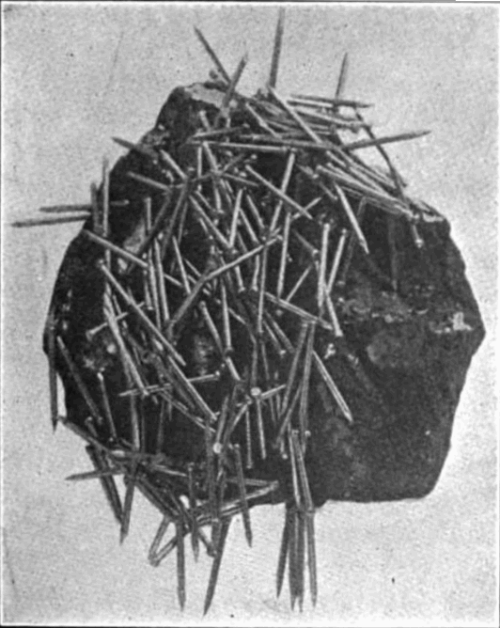

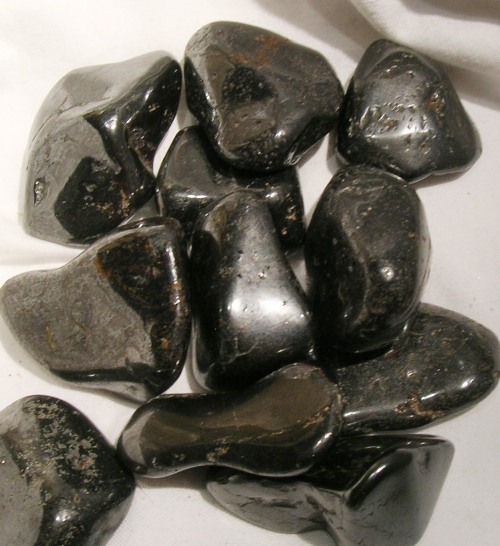





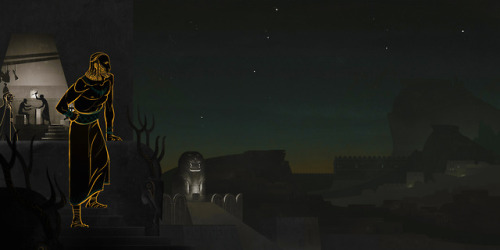

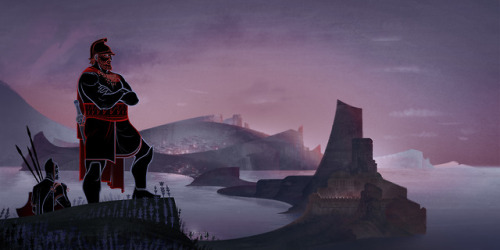
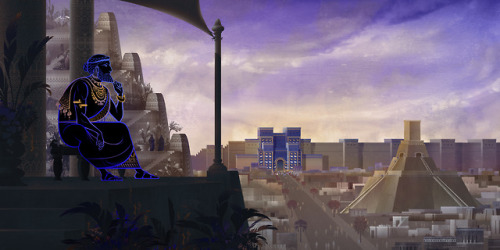
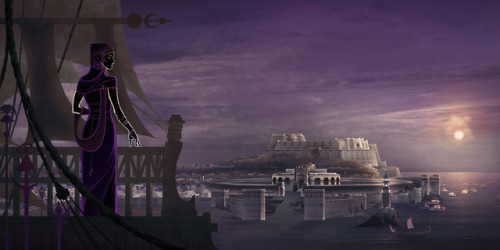



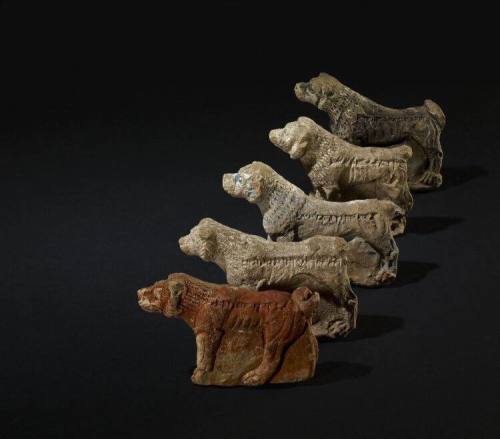

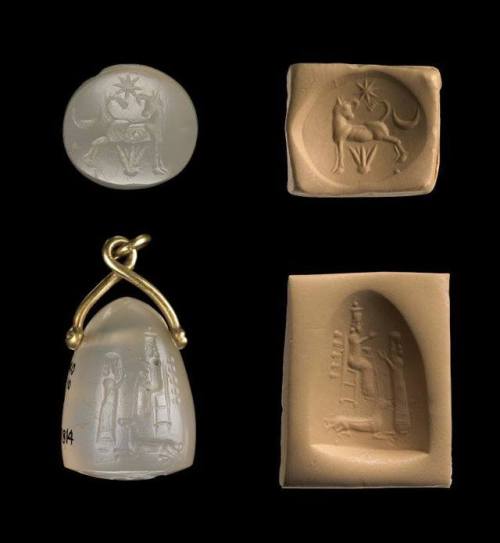
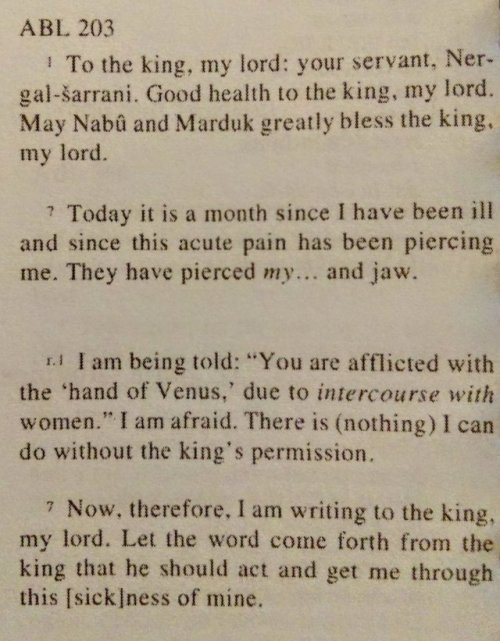


![coolartefact: Library of Ashurbanipa, 1112BC-1074BC. Middle Assyrian [OS][750x1341]Source: http://ww coolartefact: Library of Ashurbanipa, 1112BC-1074BC. Middle Assyrian [OS][750x1341]Source: http://ww](https://64.media.tumblr.com/64a6476befc38972ade229b3529e741b/tumblr_o4f8oyBfoj1ukgx4io1_500.jpg)
![coolartefact: Neo-Assyrian Amethyst Vase, 8th Century BCE. [530x563]Source: http://i.imgur.com/gYdWE coolartefact: Neo-Assyrian Amethyst Vase, 8th Century BCE. [530x563]Source: http://i.imgur.com/gYdWE](https://64.media.tumblr.com/89d0d691069ed3cbbb2cc49da8ddeb94/tumblr_o4carlCXtK1ukgx4io1_500.jpg)
